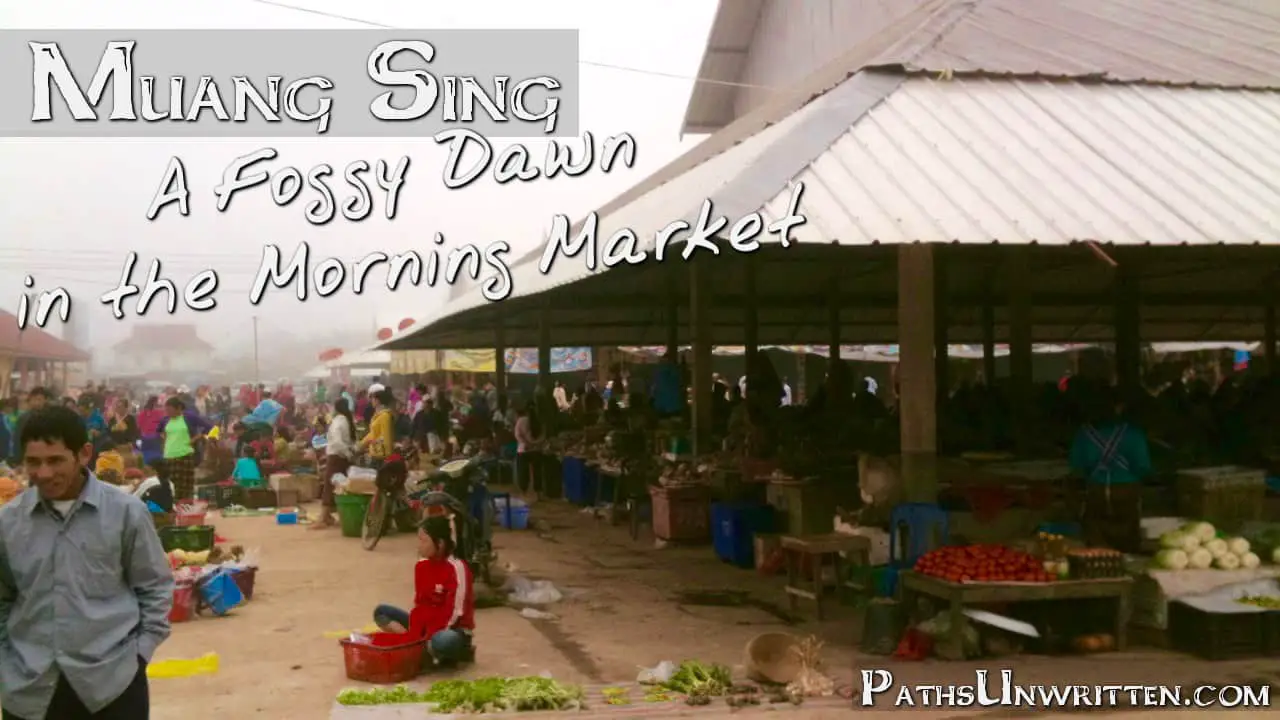If there is one spot all the guides of Muang Sing say is a “must see”, it’s the town’s Morning Market. To be perfectly honest, at that time, markets never interested me all that much. However, they have since grown on me significantly.
I had already seen a good share of markets in Thailand, ranging from Bangkok’s chaotic and confusing Chatuchak to small neighborhood markets in Bangyai and Prachuap. In the big markets, there are endless stalls of the same repeated merchandise. In small markets, there is often little more than fruits, vegetables and food ingredients that can’t be eaten alone.
However, Muang Sing provided something a little more middle of the road.
The morning began in a dense layer of fog blanketing the entire mountain valley. Very little was visible past the windows of my guesthouse and it was the first time in nearly a year I actually had to put on a jacket.
What little traffic that existed in Muang Sing all led the way to the morning market on the opposite side of town, close to the bus station. This took me on a walk past the Old Market where I had spent a fun night with passing friends.
The number of people present at the the morning market was surprising, and actually seemed to exceed the population of the whole town. Going by what I had read about the market, this is likely true, as people come from the whole region to buy and sell goods. Among the more common tidbits the guidebooks say is that a number of these people are from different ethnic minorities. Although, looking around, I had little idea what these minorities were or how to identify them.
However, this is where the Muang Sing morning market becomes interesting. Because Muang Sing is not much of a tourist town, the sort of goods which flood markets in cities like Bangkok and Chiang Mai are nowhere to be seen. Yet, because it is the only semblance of a real town in the whole area (Luang Namtha is a rough hour’s ride away), people bring all assortment of goods to sell here, not just the staple household goods and food ingredients found in common neighborhood markets.
All that said, it is still more of a browsing market than a buying market for the stray foreigner passing through. Live animals and butchered meats mix with textiles and cleaning utensils and lots of produce. Many of the goods are more varied than I can describe here, but almost nothing that is usable to a visitor. And there is surprisingly very little, if any, food stalls you can buy snacks from.
I did  find one item worth taking an interest in. Off in one corner of the morning market, far from the crowds around the produce and fresh meat was a glass case with a handful of specially crafted items. And though none of them were spectacular works of art, one pewter triangle strung to a thin chain did catch my eye.
find one item worth taking an interest in. Off in one corner of the morning market, far from the crowds around the produce and fresh meat was a glass case with a handful of specially crafted items. And though none of them were spectacular works of art, one pewter triangle strung to a thin chain did catch my eye.
A momento of the news of my friend I had heard when the furthest away I had ever been, the cheap chain it was attached to long since rusted and broke. It now makes up one-third of the small talisman I keep around my neck and have re-strung every time I return to Bangkok.

























Good story. Your missing out on n Elnio winter back home, been very mild. Be safe, and good luck in your travels.
Thanks. I’ve heard the weather in the Great Lakes has been quite unpredictable this season. But, hopefully you’re all on the tail end of it now.